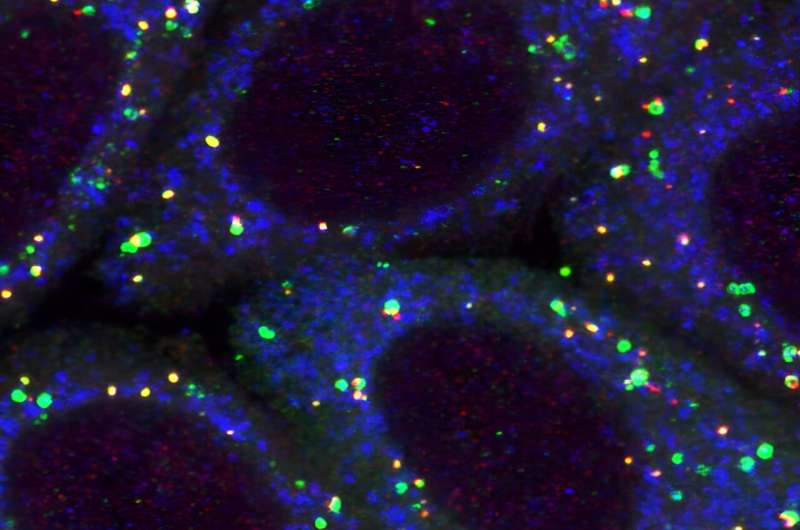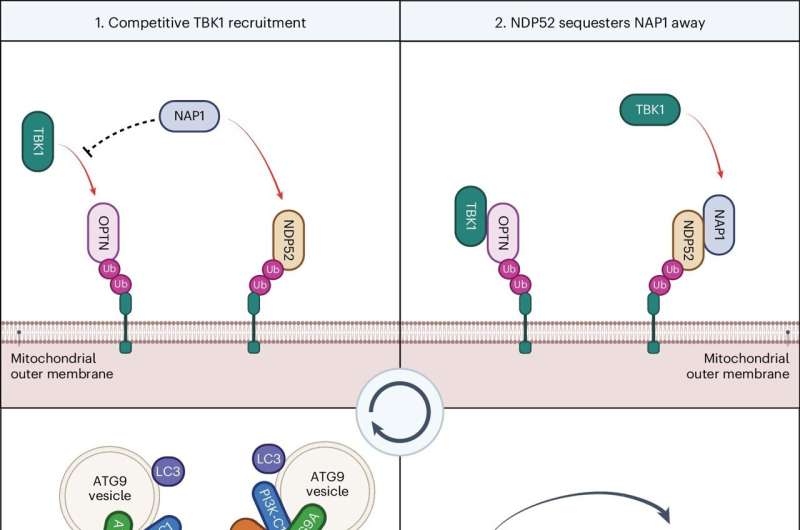This article has been reviewed according to Science X's editorial process and policies. Editors have highlighted the following attributes while ensuring the content's credibility:
fact-checked
peer-reviewed publication
proofread
Protein discovery linked to Parkinson's disease opens future research areas

Parkinson's disease is the world's fastest growing neurological condition. Currently there are no drugs or therapies that slow or stop the progression of the disease.
In Australia, someone is diagnosed with Parkinson's approximately every 30 minutes. Current estimates show there are more than 219,000 people living with Parkinson's in Australia, a number forecast to double in the next 15 years.
WEHI's Parkinson's Disease Research Center has some of the world's leading researchers tackling the problem using a multi-disciplinary collaborative approach.
New proteins linked to Parkinson's pathway
Mitochondria are the energy generating machines in our cells and are kept healthy by mitophagy, which is the molecular process of removing or recycling damaged or dysfunctional mitochondria.
PINK1 and Parkin are two key genes involved in mitophagy, and mutations in these genes are linked to early-onset Parkinson's disease.
Until the discovery of two proteins, NAP1 and SINTBAD, exactly how PINK1/Parkin mitophagy activation was regulated was unknown.
The new research, published in Nature Structural & Molecular Biology, has revealed that NAP1/SINTBAD function by regulating the threshold for mitophagy activation.

Associate Professor Michael Lazarou said the discovery of NAP1/SINTBAD expands our understanding of how mitophagy is regulated and adds a fresh area of focus for researchers to target in their search for drug therapies.
"Targeting these proteins in neurons could be a potential avenue to boost mitophagy by lowering the activation threshold, which in turn can promote mitochondrial and neuronal health."
What does this mean for people with Parkinson's?
For people living with Parkinson's disease there are no drugs to slow or stop the progression of the disease, which affects movement as well as non-motor symptoms such as mood, sleep, memory and speech difficulties.
It is hoped this research, in combination with expertise from WEHI's National Drug Discovery Center, will drive further research into finding targets for drug development and deliver opportunities for developing new therapies aimed at targeting neurodegenerative conditions such as Parkinson's.
More information: Elias Adriaenssens et al, Control of mitophagy initiation and progression by the TBK1 adaptors NAP1 and SINTBAD, Nature Structural & Molecular Biology (2024). DOI: 10.1038/s41594-024-01338-y


















